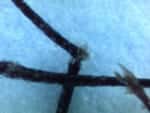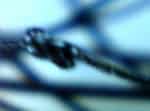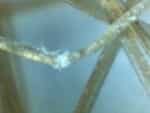Hair Shaft Defect
The following information outlines many of the hair shaft defect that we may come across at our clinic. Some are more common that other. Further information on each topic may be found on the menu above. If you feel that you are suffering from a hair shaft defect then why not give us a call and speak with an expert on the phone right now? Its free and you may just find the answer you are looking for.
If you are suffering from a hair shaft defect or any other hair loss or scalp condition you would be wise to seek professional opinion as them may be a symptom of a more sinister conditions that need to be addressed. Please feel free to use our free advice line top of page alternatively, complete the contact page and a trichologist will get back to you. The following covers the main hair shaft defects that affect us. You will see that self diagnosis is not possible. Professional microscopic examination is required.
Bamboo hair
The formation of twists cause a weak point in the hair shaft resulting in hair breakage.
Bubble Hair
The hair shaft is filled with minute air pockets called vacuoles which may contain water when hair is wet. This condition may result in hair breakage.
Club Hair
Hairs that are reaching the end of their life denoting the transition through the hair life cycle from anagen through catagen to telogen.



Exclamation Mark Hair
These types of hair formation are presented in cases of alopecia areata, a sign the condition is deterioration.
Grooved Hair
This formation may well be normal but can also be part of a hair shaft defect. Presenting as longitudinal grooves along the hair shaft.
Kinked Hair
Presenting like that of hair from the pubic region, also known as Wooly hair syndrome.
Monilethrix
This hair shaft defect presents as beaded hair, with alternating pretruding nodes and constrictions resulting in weakness in the hair shaft.
Pili Torti
Aka trichokinesis, presents as spiraling hair like a cork screw. This hair shaft defect may present a shimmering effect.
Pili annulati
Describes a hair shaft defect that presence as light and dark bands along its length. Tends to be more apparent in blonde hair and dark hair tends to masks this condition.
Psuedo Pili Annulati
Presenting a similar appearance to that of Pili Annulati, however, this type refers to hairs that are flat and twisted. The hair would present as natural highlights in localised regions.
Psuedo monilethrix
Similar to that of monilethrix, however the hair “beads” are flattened fibers with a rounded cross section.
Split Ends
Hair which splits, from the distal end leading to hair loss at skin level if not dealt with.
Tapered fracture Hair
Where the hair has broken it forms a tapered point.
Trichorrhexis nodosa
A defect which can be a result of hair processing or congenital. The cuticle surrounding and protecting the hair fails to form correctly or is stripped through chemical application which destroys the protective layer resulting in hair breakage.
Trichoclasis
Sometimes referred to as green stick hair, this hair shaft defect cause a clean break across the hair shaft.
Trichoschisis
Similar to trichoclasis, presenting as a clean break across the hair shaft due to absence of the hair cuticle.
Trichothiodystropy
A congenital disorder causing a defect in the production of hair fiber.
Uncombable hair syndrome
Also known as spun glass hair, both of which describe the hair fiber itself. The hair may look like spun glass strands which grow in all directions.
Whisker hair
Presents as an irregular bands extending around the edge of the scalp from the ears to the occiput. This form of hair shaft defect affects those from adolescence producing whicker like hairs.
Wooly hair
Sometimes called frizzy hair – a type of hair that presence as very tightly curled hair fibres.
Pili Multigemini hair follicles (compound hairs)
A condition that results in multi hairshafts being produced from a single hair follicle. This does happen rarely, but should not be considered an issue. In fact many hair surgeons use this method of growth to thicken the appearance of the transferred hair shafts with good effect.
Registered with the Trichological Society

